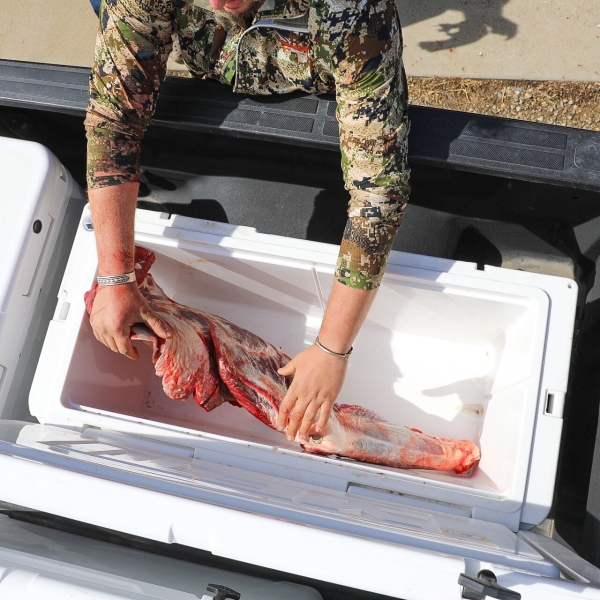

Although hunters take their venison to meat processing facilities, anyone can process their own meat at home, given the right conditions. There's no better feeling than knowing you harvested, processed, and prepared a meal out of game meat yourself.
Once you understand how the entire process works, it can take less than half an hour to complete the major processing steps. Let us show you how to process meat at home such that you don't waste anything and get full value for your efforts.
After an animal dies, it goes into a state of rigor where its muscles contract and become stiff. Butchering the animal in this state is usually harder as the meat is tougher. It's important to allow the deer to hang in the proper condition so that natural enzymes can break down muscle collagen that toughens up meat. Once the meat has aged properly, you can begin the process of:
This involves removing the animal's hide. You do this while the animal hangs upside-down, from the hind legs to the tail, torso, and front leg. It's essential to have sharp knives of different sizes for skinning.
Once you're double sure your meat is free of hair and dirt, you can begin prepping it in this order:
Shoulders: Pull the shoulder away from the torso and cut to expose through the cut zone
Back straps: Cut just under the hip bone and along the backbone to the neck
Neck Meat: Cut any chunks of venison from the top neck to the windpipe
Saw the Backbone: Separate the front from the hind quarter once you clean up the front half
Sirloin: Start cutting from the knee to the hip and turn your knife 90 degrees to finish the cut
The remaining hind quarter: Remove all remaining meat on leg bones and other parts
Trim the Cuts: Remove excess fat, skin, and tendon from the meat
Packaging: Put the meat in plastic wrap or butcher paper for proper storage
There are numerous benefits to processing your own meat over taking it to a meat processing facility. These include:
Many meat processors charge a fee to process any meat. They also waste a lot of meat, reducing the original catch's overall value. Processing your own meat saves you from paying hefty processing fees and losing valuable meat.
Processing your own meat ensures you monitor the conditions under which it's stored for longer shelf life. Under the right conditions, processed meat can last for years.
Meat from the store comes with extra ounces that can be dangerous to health. Processing meat at home ensures you cut meat into healthy proportions that your body requires, thus preventing weight issues.
If you're planning on making meat products from your venison, later on, you have control over the ingredients that go into your products. It is healthier than buying meat products with added ingredients.
By preserving meat correctly, you can make it last weeks, months, or even years. Some of the best ways to preserve home-processed meat include:
Refrigeration – storing meat at sub-zero temperatures increases its shelf life, though some meat types may lose taste
Dehydration – removing moisture to reduce the rate of spoiling
Curing – applying regular and pink salt to meet to prevent moisture and prevent bacterial growth
Meat processing at home requires a set of tools for proper execution. Like if you want to turn your meat into various meat products like jerky, you'll need a specific set of tools. At LEM, we offer various products to help you process meat faster and more effectively.